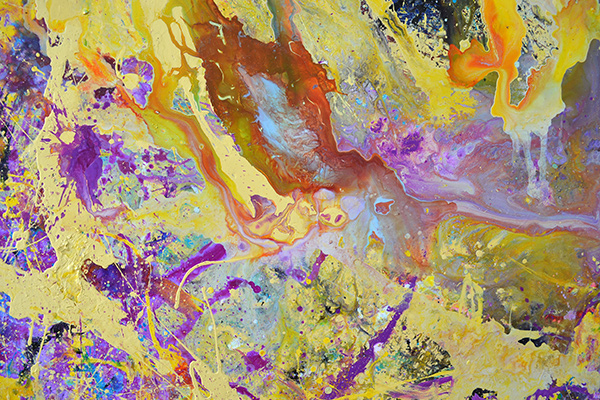Unpainted
Helen Calder, James Bellaney, Kim Pieters, Fu On Chung | Curated by Briar Holt
Exhibited until 18 October 2014
I rarely get down to the Blue Oyster on Dowling Street, but every time I go there, I am always pleasantly surprised.
Briar Holt’s Unpainted curation is a series of work by artists Kim Pieters, James Bellaney, Helen Calder and Fu On-Chung, whose work treats the medium of paint in an explicitly non-traditional way, drawing attention the out-datedness of generic painted canvas pictures. The exhibition shows the diversity of the medium, and how paint can be understood conceptually as well as aesthetically.
“Considering painting as the premise for this exhibition but not the parameter ‘unpainted’ manifests in symmetrical configurations by drawing together four artists: two based in Dunedin, two based elsewhere; two positioned as emerging practicers, and two more established.”
Each installation displays a different way in which the artist has used paint to remodel the idea of what a painting is, and how paint can be used.
“Helen Calder’s suspended acrylic paint skins have no wall on which to hang, removing any framework that denotes that installation as a traditional painting.” Each red paint skin hangs from the ceiling from a silver hook – it kind of looks like silk that has been draped and solidified around a black rubber cord that swirls and accumulates on the ground, and at the base of each piece.
The architecture of the skins is what the viewer is drawn to as it drapes and folds around the cord it is suspended by. In doing this, each piece, rather than reflecting some specific moment or object, appropriately draws attention to just the paint as it exists in its purest form. Calder’s use of intensely saturated colours is reflected in her title: “red, red, red, red.”
“Kim Pieters’ dreamy moving image soundscape ‘Flame’ takes on a number of painterly qualities – picture soft focus renderings of Dunedin’s First Church steeple against a background of scumbling and swirling dabs of light.” The soft, low-resolution looking rendering of light works to attribute painterly qualities to the film medium – again, drawing attention to the idea of paint as a texture, a medium, and solo-substance, not just something which is used to reflect something else.
James Bellaney’s pieces were my favourite in the collective exhibition. Bellaney’s work is generally quite dark and moody, with swirling brown and red and black paint often being used. But in this exhibition, Bellaney treats paint as what he referred to as a “purge” of his thoughts, which manifests in “dynamic and swirling textual elements which are created by the painstaking process of layering and manipulating the trajectory of paint as it travels across the surfaces of large scale panels.”
The pictures are appropriately rested on the floor of the gallery, again, taking away that traditional feeling of “a picture on a wall.” It felt very saloon style and the paintings look like rainbow popsicles and marble bubble pictures. Definitely something different from James who claims colour is not his favourite thing to work with.
Each of the works inherently imagine a sense of “painterly collapse” and Fu On-Chung’s canvases work most obviously to comment on the “potential redundancy of painting, masked with bright colours and light-reflecting wrapping.”
His series of work almost look like microscopic photos of bacteria with bright-blotched colours in various shapes and forms on the canvas. Two of the canvases are covered in plastic which is so “unpainterly” to look at – it kind of rejects the whole point of looking at painting but, at the same time, is interesting and looks more like a sculpture attached to the wall rather than a painting. In doing this it appears that Chung’s work is a “bittersweet approach to painting as a practice.”



